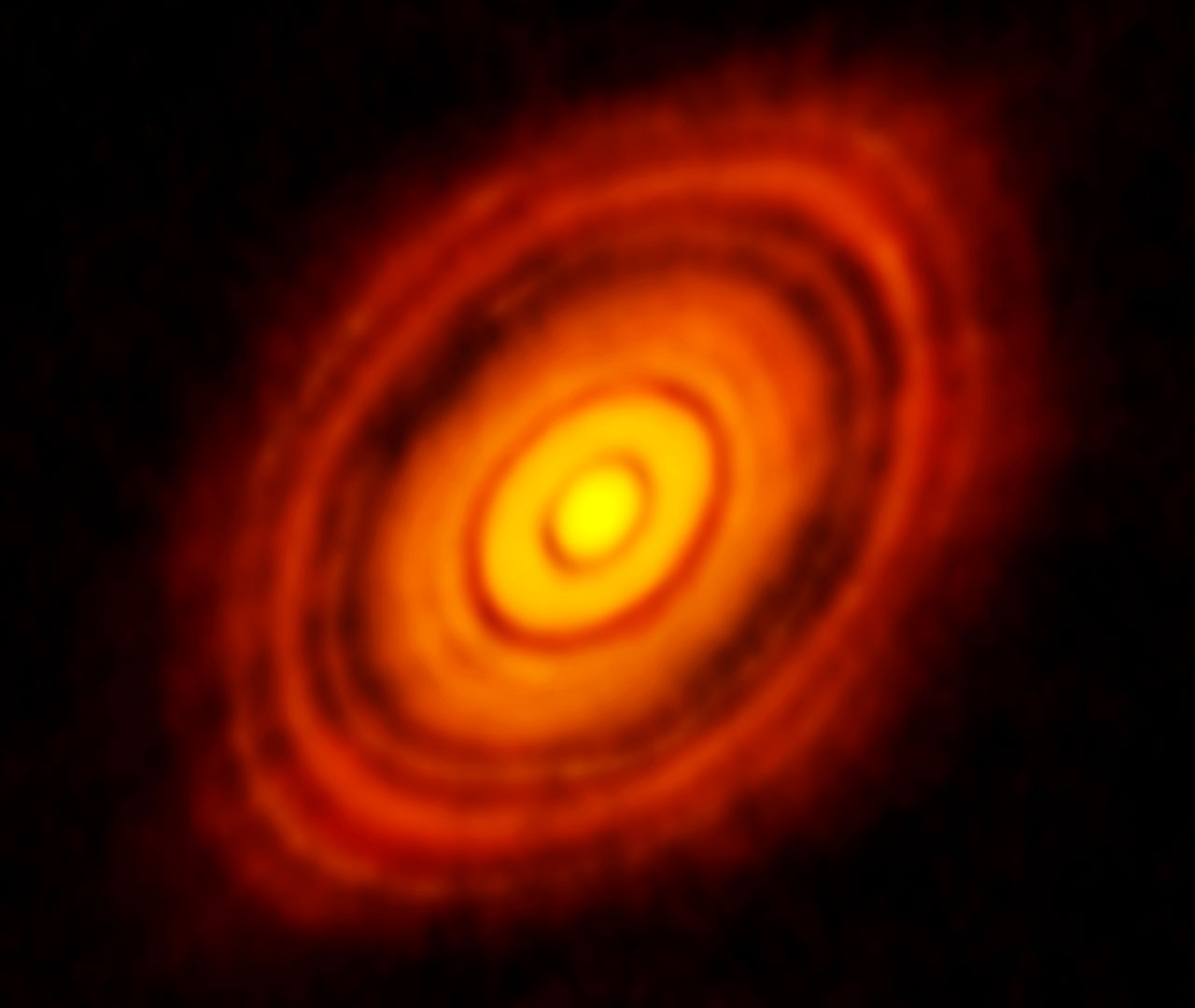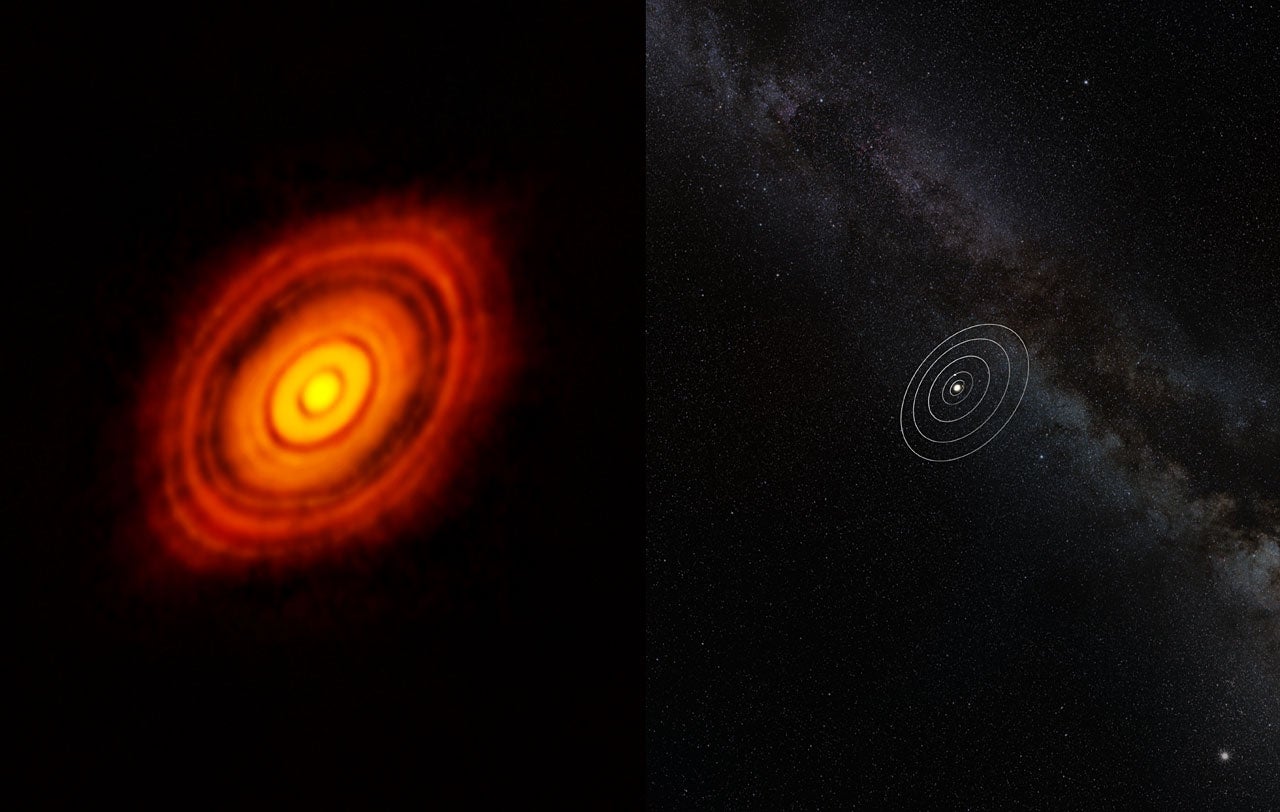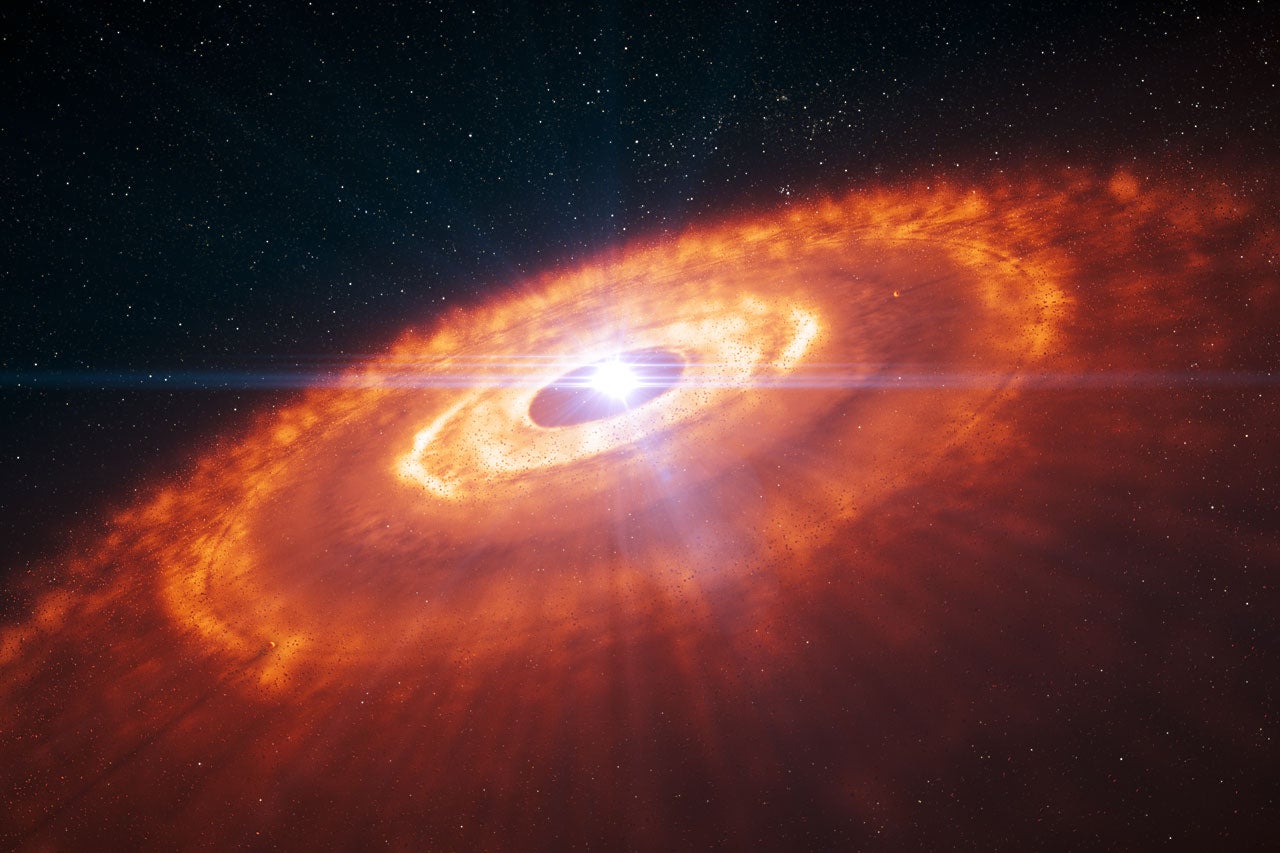Scientist capture 'sharpest ever' image of planets forming around a star
The star - HL Tauri - is 450 light years away from Earth

Your support helps us to tell the story
From reproductive rights to climate change to Big Tech, The Independent is on the ground when the story is developing. Whether it's investigating the financials of Elon Musk's pro-Trump PAC or producing our latest documentary, 'The A Word', which shines a light on the American women fighting for reproductive rights, we know how important it is to parse out the facts from the messaging.
At such a critical moment in US history, we need reporters on the ground. Your donation allows us to keep sending journalists to speak to both sides of the story.
The Independent is trusted by Americans across the entire political spectrum. And unlike many other quality news outlets, we choose not to lock Americans out of our reporting and analysis with paywalls. We believe quality journalism should be available to everyone, paid for by those who can afford it.
Your support makes all the difference.Scientist have captured the clearest ever image of planets forming around a young star.|
In the centre is the star HL Tau - less than a million years old and not dissimilar in composition to our own Sun – surrounded by fiery concentric circles of dust and gas.
The gaps in this glowing disc make it look like the cross-section of some cosmic tree, but each dark ring shows the future orbit of a planet - their coalescing bodies sweeping a clear path through the debris.
The image was captured by an array of radio telescopes in the Atacama desert in northern Chile known as ALMA (the Atacama Large Millimeter/submillimeter Array). Scientists say it’s a massive step forward in our knowledge about the genesis of planets.

“When we first saw this image we were astounded at the spectacular level of detail,” said ALMA deputy program scientist Catherine Vlahakis. “HL Tauri is no more than a million years old, yet already its disc appears to be full of forming planets.”
Tim de Zeeuw, director general of the European Southern Observatory (ESO) added that such a high resolution image would help us understand also the formation of Earth more than four billion years ago.
“Most of what we know about planet formation today is based on theory,” said de Zeeuw in a press release. “Images with this level of detail have up to now been relegated to computer simulations or artist’s impressions.”

Star formation itself happens in massive interstellar clouds of gas and fine dust, which collapse in random patterns to form denser clumps which begin to rotate and eventually form stars.
These begin life surrounding by the ‘accretion discs’ seen above, with gravity causing material to spiral inward and feed the growth of the star while localized clumps within the surrounding matter eventually become planets, comets and asteroids.
Subscribe to Independent Premium to bookmark this article
Want to bookmark your favourite articles and stories to read or reference later? Start your Independent Premium subscription today.
Join our commenting forum
Join thought-provoking conversations, follow other Independent readers and see their replies
Comments